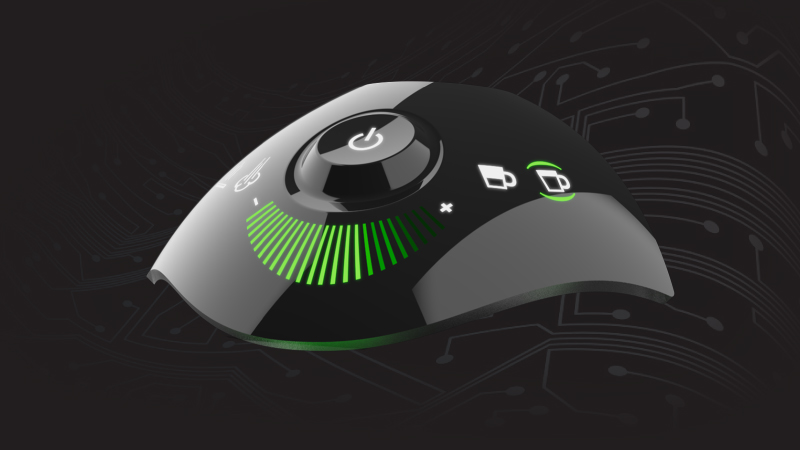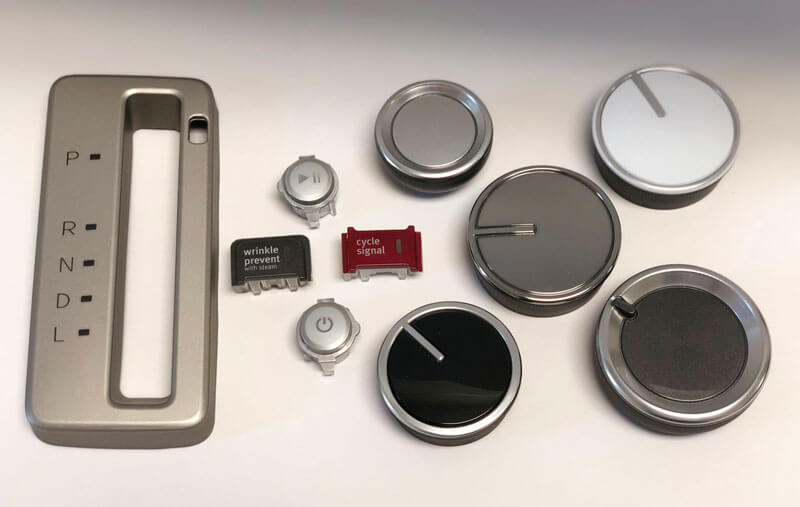In-Mold Decorations: Changing Manufacturing Standards
In-Mold Decorations: Elevating Products With Accuracy and Appearances
In the realm of product design, the marriage of accuracy and visual appeal holds an extremely important placement in capturing customer focus and commitment. In-Mold Decorations (IMD) have arised as a sophisticated strategy that not just elevates the visual allure of products however additionally ensures a careful combination of layout aspects.
Advantages of In-Mold Decorations
Using in-mold decors provides makers an affordable technique to perfectly incorporate elaborate layouts onto plastic surface areas during the production procedure. This ingenious strategy involves putting a pre-printed film or label right into the mold and mildew before infusing the molten plastic, leading to a permanent fusion of the decor with the item. The benefits of in-mold decorations are manifold, starting with the ability to achieve high-resolution graphics and comprehensive designs that enhance the visual allure of the end product. This procedure removes the demand for second operations such as paint or post-decoration, improving the manufacturing process and decreasing production time and expenses.
Along with boosting looks, in-mold decorations also boost the longevity and durability of the style as it ends up being an indispensable component of the item, rather than a surface layer that can diminish with time. Additionally, the smooth combination of designs through in-mold techniques ensures a consistent and uniform look throughout all produced items, maintaining brand consistency and top quality requirements. Generally, the advantages of in-mold designs make it a favored option for suppliers seeking to raise their items with precision and visual appeal
Precision in Style Assimilation
Attaining precise layout combination through in-mold decors needs an eager concentrate on precision and focus to information from the preliminary stages of the production procedure. The success of in-mold decors depends upon the smooth integration of the design with the product, producing a unified and aesthetically attractive end outcome. Precision in layout combination involves factors such as making certain the accurate positioning of the design within the mold and mildew, selecting the appropriate products to attain the desired visual, and maintaining consistency throughout the production process.
One key facet of accuracy in design combination is the positioning of the design with the item's shapes and features. This needs mindful preparation and execution to make certain that the layout matches the product's form and boosts its overall look. Furthermore, focus to information is vital in preserving the top quality and uniformity of the designs throughout numerous manufacturing runs, guaranteeing that each product fulfills the highest criteria of accuracy and visual allure. By prioritizing accuracy in layout integration, manufacturers can raise their items and produce an enduring impression on consumers.
Visual Appeals and Aesthetic Impact
With a concentrate on improving the overall allure of products, the looks and aesthetic influence of in-mold decors play an essential role in captivating customer interest. In today's affordable market, where consumers are inundated with options, the visual appeal of an item can be the separating element that influences acquiring decisions. In-mold decors use a special chance to boost the visual appeals of products by supplying elaborate styles, vibrant shades, and seamless coatings that traditional decorating techniques might battle to attain.
The visual impact of in-mold decorations expands beyond plain aesthetics; it communicates brand name identity, interest, and quality to information. By including aesthetically appealing aspects right into item design, makers can develop a strong brand name visibility that resonates with consumers on a subconscious level. Furthermore, the accuracy and uniformity provided by in-mold design strategies make certain that every item meets the highest requirements of aesthetic allure, reinforcing brand name integrity and consumer trust.
Cost-Effectiveness of IMD

IMD decreases the demand for additional procedures like painting or labeling, conserving both time and sources. By incorporating the decor straight great post to read right into the molding procedure, IMD eliminates the extra steps required for applying designs post-production. This structured process not just lowers labor costs yet also reduces the threat of mistakes or issues that may develop throughout second decorating procedures.
Additionally, IMD boosts the durability of decors by enveloping them within the item, making certain a longer-lasting and more resistant coating - In-Mold Decorations. This durability converts right into decreased upkeep and substitute expenses over the product's lifecycle, making IMD a cost-efficient option for attaining exceptional aesthetics and aesthetic charm in manufacturing
Longevity and Durability
Incorporating in-mold decors not only ensures cost-effectiveness in manufacturing procedures however also dramatically improves product resilience and long life. The process of in-mold decoration entails the application of graphics or attractive surfaces during the molding process, producing a integrated and seamless layout that is secured within the product itself. This protective layer provided by in-mold decors serves as a shield versus wear and tear, scratches, fading, and various other environmental aspects that can jeopardize the look and durability of the product with time.
Products with in-mold decors are understood for their resistance to abrasion, chemicals, and UV exposure, making them ideal for applications that need long-term efficiency and aesthetics. Unlike conventional surface-applied decorations that can peel or discolor with use, in-mold decors become an innate component of the product, ensuring that the layout stays undamaged and dazzling throughout the product's lifespan. This durability not only enhances the overall quality of the item but additionally reduces the need for constant upkeep or replacements, eventually giving long-lasting price savings for suppliers and consumers alike.
Conclusion

The benefits of in-mold designs are manifold, starting with the ability to achieve high-resolution graphics and detailed designs that improve the visual charm of the last item.In addition to improving visual appeals, in-mold decors additionally improve the durability and long life of the layout as it ends up being an important component of the item, instead than a surface layer that can put on off over time. pop over to these guys In-mold designs provide an one-of-a-kind hop over to these guys chance to raise the aesthetics of items by giving detailed styles, vibrant colors, and seamless coatings that traditional designing methods may have a hard time to attain.
The procedure of in-mold design entails the application of graphics or attractive surfaces during the molding procedure, creating a integrated and smooth design that is secured within the product itself. Unlike traditional surface-applied decors that can peel off or fade with usage, in-mold decorations come to be an innate part of the item, guaranteeing that the layout remains intact and vivid throughout the item's life expectancy.